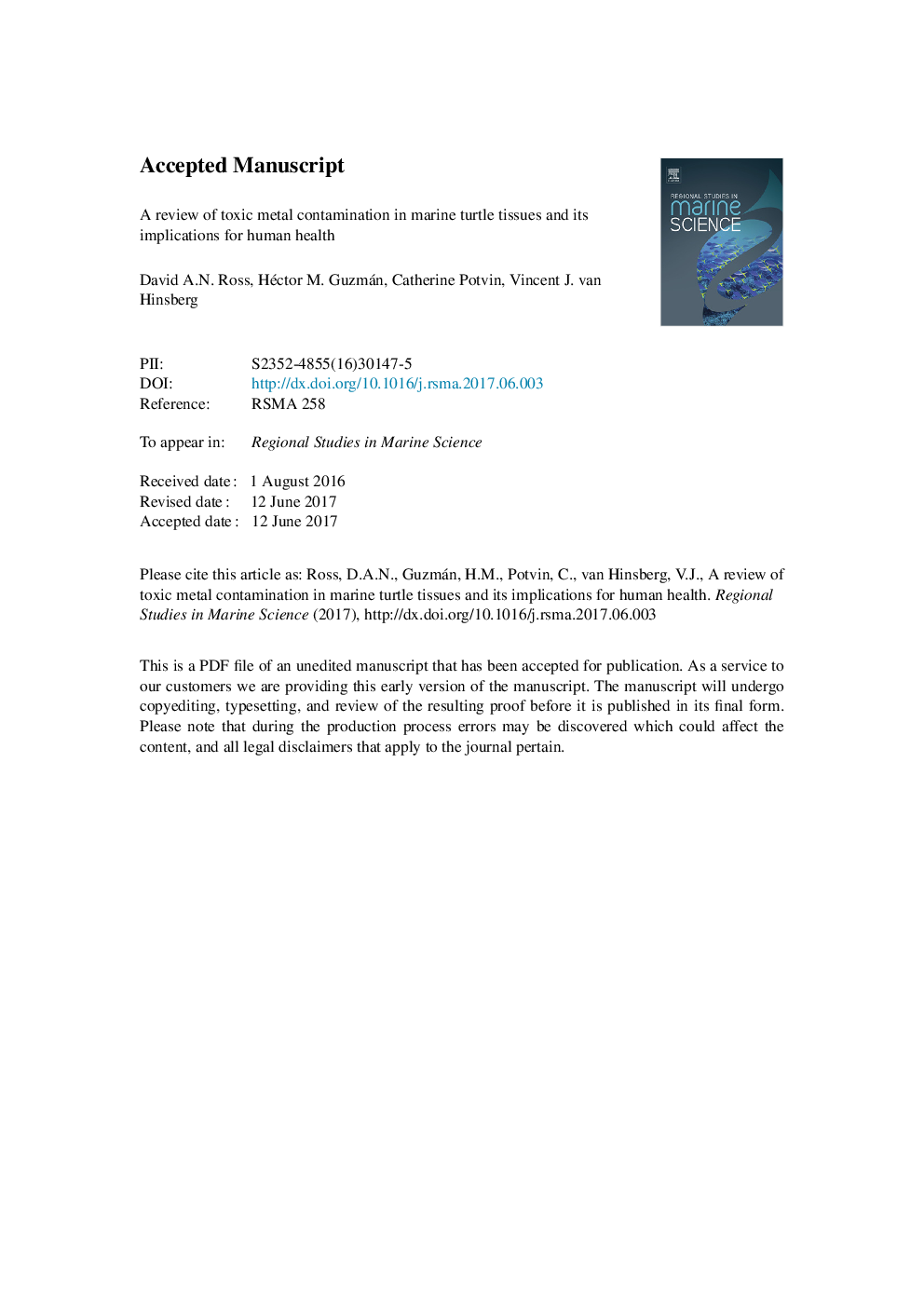| Article ID | Journal | Published Year | Pages | File Type |
|---|---|---|---|---|
| 5758169 | Regional Studies in Marine Science | 2017 | 26 Pages |
Abstract
Despite global awareness of trace-metal contamination in the ocean, its bioaccumulation through the food web, and resulting detrimental effects on health, the quantitative toxicology of marine turtles is still poorly known. Assessments are generally limited in number of species investigated, number of tissues analyzed, and geographical distribution of samples. The gaps in current knowledge prevent the use of that data in informing data-deficient regions of the potential exposure to toxic levels of heavy metals through sea turtle consumption, particularly from eggs given their widespread human consumption. We collated 95 studies reporting As, Cd, Hg, and/or Pb concentrations in edible sea turtle tissues and analyzed the data for differences among tissues and geographic locations. The majority (68%) of observations were from Caretta caretta or Chelonia mydas, with 59% of data from liver, kidney, muscle, or blood; and only 8.2% from eggs. We observed the expected tissue-selective distributions for all metals, but with significance only for As (muscle) and Cd (kidney). Cd posed the highest potential health concern, through consumption of kidney and liver, while Pb and Hg posed the highest concern through egg and muscle tissue, respectively. Data are sparse, however our conclusions show that heavy metal exposure through regular sea turtle consumption may pose a health concern. Future analyses, with priority given to eggs, adult olive ridleys, and adult hawksbills are needed to fully understand the human-health risks of global sea turtle consumption.
Related Topics
Physical Sciences and Engineering
Earth and Planetary Sciences
Oceanography
Authors
David A.N. Ross, Héctor M. Guzmán, Catherine Potvin, Vincent J. van Hinsberg,
